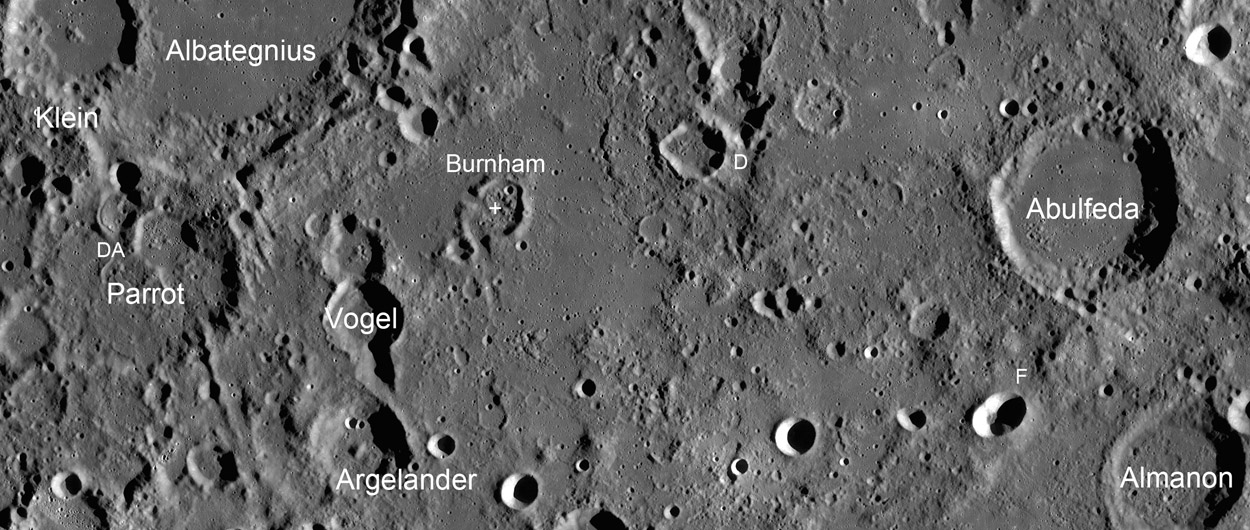August 7, 2011
Potpourri

LRO WAC mosaic from " rel="nofollow WAC Global View (NASA/GSFC/Arizona State University)
In looking in detail at part of one of the Lunar Reconnaissance Orbiter Wide Angle Camera (a mouthful) mosaics
today I noted a number of interesting small features; thus this lunar potpourri. The last word refers to dried and
fragrant flowers and other plant material. The Moon is dry (mostly), astronauts noticed a smell like gun powder,
it is our flower of the evening sky, and by adding one more letter we get planAt material - so potpourri it is. Here
are four fascinating features. Starting near top left is a feature I've lettered Parrot DA - it is officially unlettered, but
is next to Parrot D (the crater to the left of the DA type). DA is almost like a concentric crater. It has a ridge that
continues around the crater rim, just a little below the rim crest. It doesn't look volcanic but seems more like a
uniform slide downward of rim material. Odd and weird. Move east to Burnham (marked with a +). It may be an old
basin secondary made up of multiple overlapping craters. The thing that caught my eye is the mass of bumps and
hills on the floor - where did they come from? They look too big to simply be material slumped off the rim. The next
minor oddity is Abulfeda D. This teardrop-shaped crater is one of the asymmetrical secondaries from the Nectaris
Basin that [/March+25%2C+2009 Bill Ambrose] mapped. They formed by low speed and low angle oblique impacts. The final stop on this
magical tour is Abulfeda F near bottom right. This non-circular crater is made of two circular parts with a missing
wall where they intersect. This is the morphological signature of a simultaneous impact. This could have formed
as a higher angle secondary from Nectaris but it is much fresher than other Nectaris secondaries and isn't radial
to the basin - two fatal flaws. Perhaps it resulted from a single impact of an asteroid or comet that was pulled into
two pieces by the Moon's gravity and separated only a little before impact. If you look around you will find other
intriguing objects to investigate.
" rel="nofollow Chuck Wood
Related Links
Rükl plate 56



